Is Chevron Tarantula Poisonous? A Care Guide Of This Exotic Pet

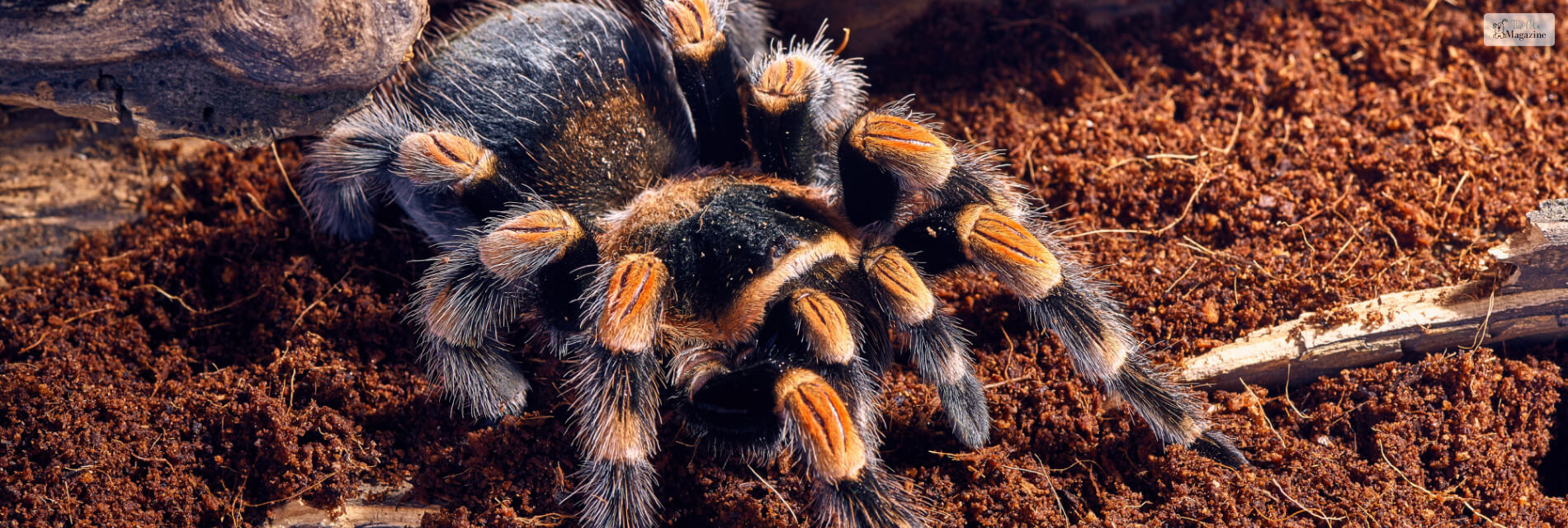
If you are a collector of exotic pets, then what better pet than a tarantula? If they don’t give you the hibbie jibbies, then they can make great pets since they are very low maintenance. These tarantulas are really interesting and are fun to look at.
But if you are looking for tarantulas of different species, then why not buy a Chevron tarantula?
But with any tarantulas, the question is the same, “Are they poisonous?” Keep on scrolling to find out.
Overview
Here is a brief overview of the Chevron Tarantula:
| Kingdom | Animalia |
| Phylum | Arthropoda |
| Subphylum | Chelicerata |
| Class | Arachnida |
| Order | Araneae |
| Infraorder | Mygalomorphae |
| Family | Theraphosidae |
| Genus | Psalmopoeus |
| Species | P. Cambridgei |
| Binomial Name | Psalmopoeus Cambridgei |
| Color | Olive Green |
| Life Span | 12 years |
Are Chevron Tarantulas Poisonous? How To Care For Them?
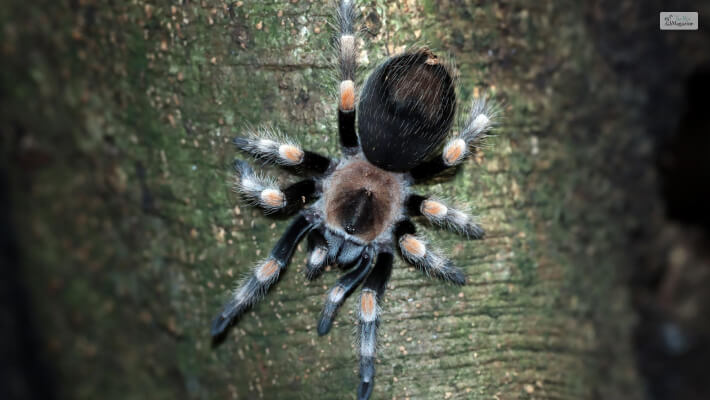
Chevron tarantulas are native to Trinidad and are an old-world species of tarantula. They are very easily distinguished by anyone as they are light olive in color and have orange colored markings on the legs.
They have a furry look to themselves and are available in many different colors than just olive green. Some other colors are as such dark green, dark grey, or brown. It usually has a multi-colored abdomen. Male Chevron Tarantulas are generally grey or brown in color whereas the female tarantulas come in a wide ranging variety of colors from brown to green with orange or red markings on the legs.
But if you are thinking of buying a chevron tarantula for yourself, then you need to know how to take care of one.
1. Habitat
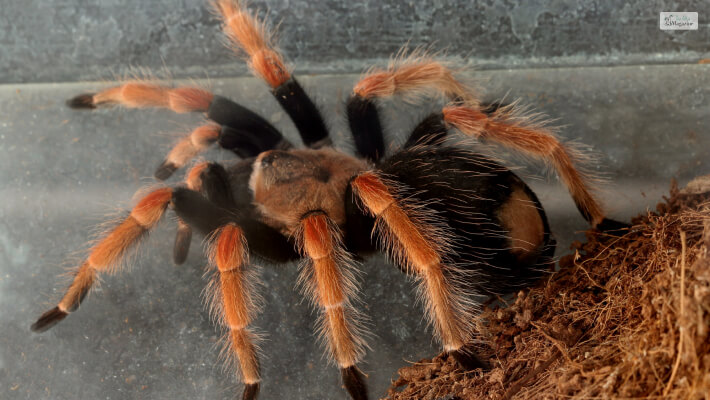
These Tobago giant spider or also known as the Chevron tarantulas are mainly found in the Tropical rainforests. Chevron tarantulas are known to be tree-dwellers, so you won’t have to worry about them on the ground. In the wild, the Trinidad Chevron Tarantula can be mainly found in epiphythtic plant growth, loose tree barks and rot holes.
The younger spiderlings usually burrow into a substrate till they are old enough to climb up the trees. So when you are creating an enclosure for them, make sure to put branches and plants inside the enclosure for them to climb.
Other than packing the enclosure with fake plants, always put real plants; they will keep the spider more active.
2. Food

The Trinidad Chevron tarantula are predators, so they usually hunt small animals such as mealworms, crickets, cockroaches, frogs, and grasshoppers. This breed of tarantulas is known to have a big appetite and really gushes over its prey. They always seem to be hungry.
In the wild, these Tarantulas move a small distance away from their place of residence to prey on animal that they can find and is large enough for them to defeat. These tarantulas dont use their web to catch prey. Instead, the Chevron Tarantula uses its fangs to insert venom into its prey to stun, kill and liquefy them.
3. Caging
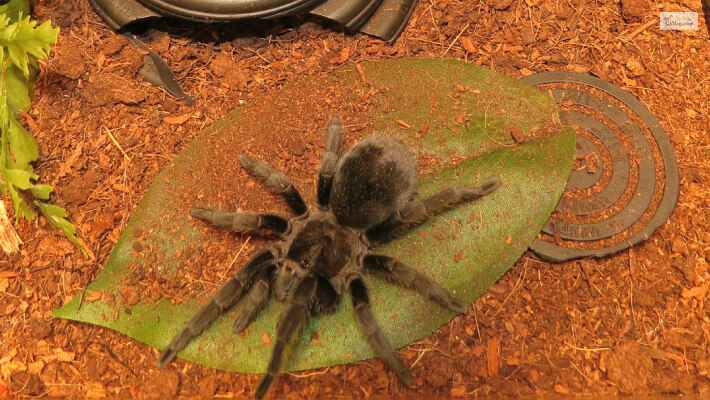
When you are handling arboreal species of tarantulas, such as the Psalmopoeus Cambridgei, then you should buy a large cage or enclosure. The adult Trinidad chevron tarantula size goes upto 18 inches, so they are not comfortable in smaller cages with their long legs and inclination towards climbing.
The foot length of these spiders is about 8 to 12 inches long. These long legs actually help them to hunt and move faster. When you are selecting an enclosure or a cage, you need to think about the size and proper humidity.
The cage should have a proper ventilation system in place. If you want, you can buy a cage that has grills or mesh to cover certain areas to prevent the spider from moving out. It is much better than actually buying a solid enclosure with no ventilation.
4.Tank Prepping
After you buy the tank or enclosure, you need to prepare it before you buy your chevron tarantula. The tank should have enough substrate on the floor to give a more natural feeling and to retain moisture and water through the soil.
Substrates for tarantulas are already present in the market, but if you want to make it yourself think of tropical things, such as coconut fibers and even compost. Chevron tarantulas are tropical animals, so they prefer these.
Fill a couple of centimeters from the ground with the substrate. You need to keep a water dish with fresh water at all times for the tarantula. One of the most important things to put inside the cage is a branch of bark piece for height so that the spider can climb up.
Tobago spiders are known to be tree-dwellers, so they like to climb up on things. It is important that you keep these things ready before you buy your chevron tarantula.
5. Tank Decoration and Temperature Control
You can decorate your Chevron Tarantula by buying woods that are specifically for Vivariums and Terrariums like corkwood and driftwood. Cork wood or bark is a good decor for Chevron Tarantula cage because it is not easily breakable and does not encourage mold or bacterial growth. If you are buying cork wood, make sure that one of the bark is hollow as it will mimic the tarantula’s natural habitable and also provide it with a safe hiding place.
These spiders dont really prefer a lot of sunlight so you also need to make sure that the tank is not kept in any place that gets direct sunlight. This is because if the tank is kept in direct sunlight, it will cause the temperatures inside the cage to increase rapidly killing your spider in its enclosure. The temperature in your spider’s enclosure should be kept around 75-80 degrees. You can easily monitor the temperature by placing a thermometer inside the cage. You should also place a low wattage under tank heat pad during the winter months.
Along with a thermometer, you should also keep a digital hygrometer in your pet tarantula’s enclosure in order to monitor the humidity level. 78-82% is the idea humidity level for these tarantula species. If the temperature of the enclosure becomes too dry, then your tarantula may have issues while molting. This can cause disfigurement and death.
To maintain humidity in the enclosure, place a bottle cap or small dish filled with water inside. Avoid misting directly on the Tarantula to prevent agitation, escape attempts, or bites. Instead, mist the tank walls so the substrate can absorb water. You can also mist the webbings to provide multiple water sources for your spider.
5. Personality
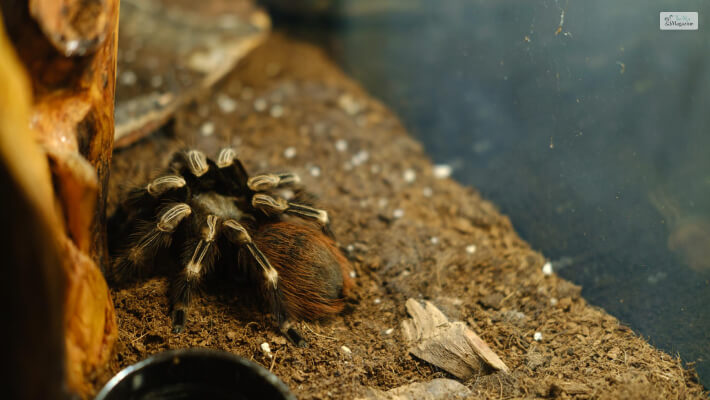
Like any other tarantulas, you should handle chevron tarantulas with care and from a safe distance. Some spider enthusiasts have noted that female chevron spiders become alert when the owner even passes by; no wonder what they will do if you attempt to clean the enclosure.
Chevron tarantulas are known to be aggressive in nature, so some spider enthusiasts don’t clean their enclosure often or clean it beforehand.
6. Reproduction
The Trinidad chevron tarantulas are known to be free breeders. If you are lucky enough, then then you have managed a successful mating process to get an egg sac.
It is very important to know that once you have spotted the female spider with an egg sac, then you need to leave her alone for about 30 days on her own. If they feel disturbed, then they might cannibalize the whole sac or leave it.
After the initial 30 days period, you can now take out the egg sac and incubate it artificially until the babies are born.
7. How To Handle These Tarantulas?
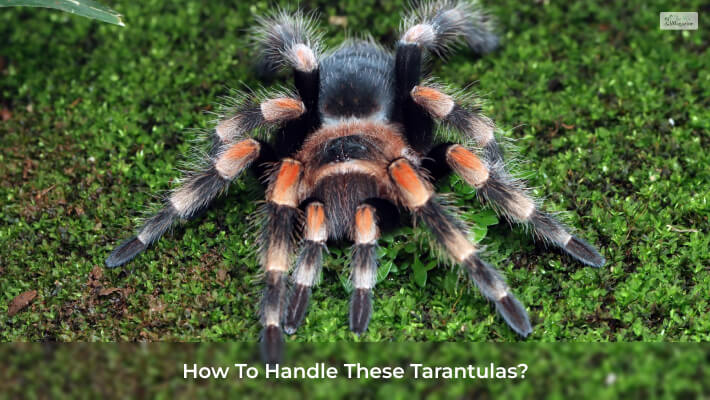
The chevron tarantulas are not docile tarantulas out there, although they are not the most aggressive ones, either. So you need to be very careful while handling these tarantulas.
Chevron tarantulas may not be very aggressive, but they are known to be very fast. With the slightest of startles, these tarantulas can move very fast. So these are not the tarantulas you should be handling with your bare hand. They are safer and prefer to be caged.
Wrapping up!
So now that you know that chevron tarantulas are one of the biggest tarantulas sizing upto 18 inches in size when they are adults. But these spiders are not poisonous as they lack any signs of potent venom and their urticating hairs.
But you would be making a big mistake if you think they are harmless; these chevron tarantulas are dangerous and are known to bite when they sense any sort of danger.
So if you find this article with you deciding to buy a chevron tarantula, do let me know. Ans comment down below do you love spiders, or do they give you the hibbie jibbies?






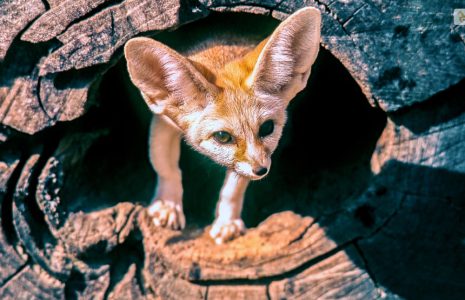
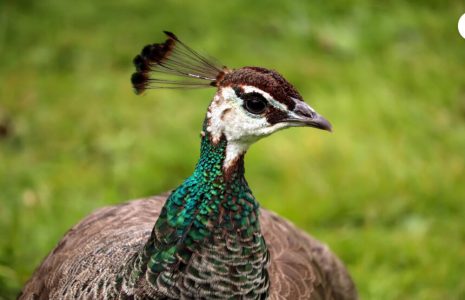
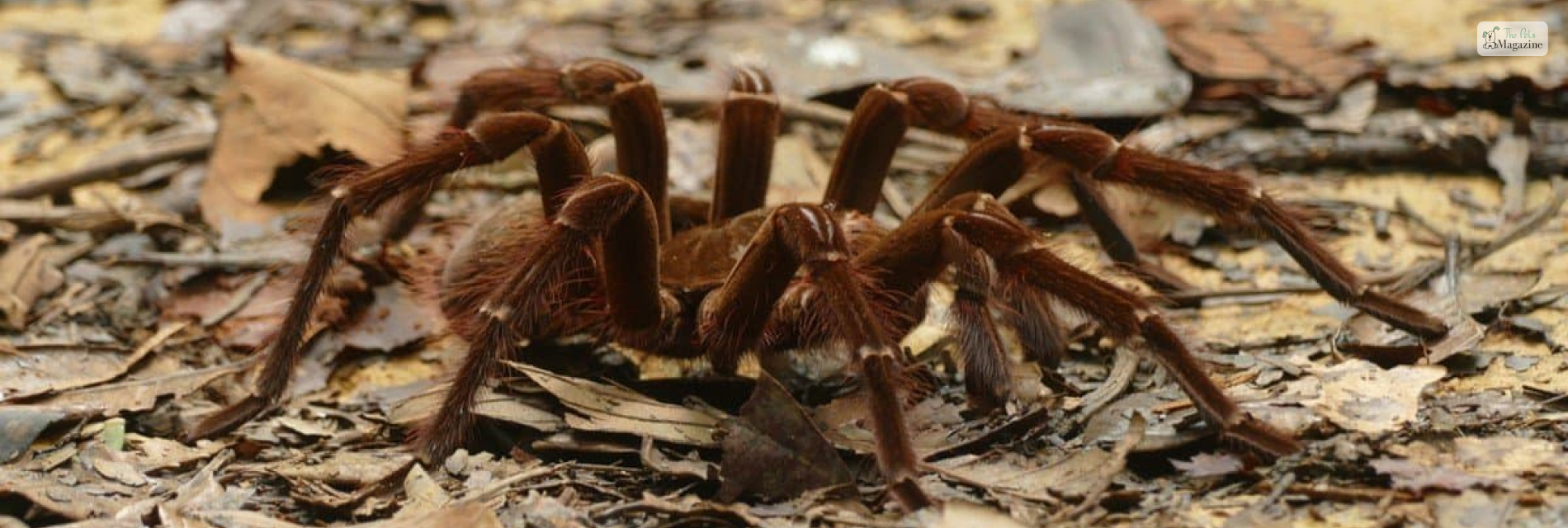
Leave A Comment